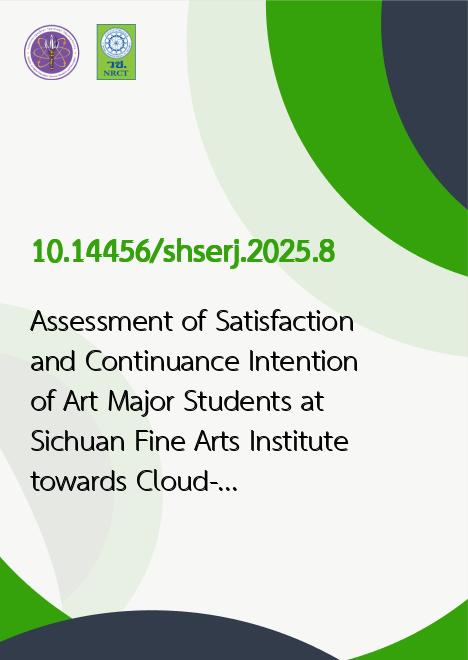
|
Assessment of Satisfaction and Continuance Intention of Art Major Students at Sichuan Fine Arts Institute towards Cloud-based E-learning Systems |
|---|---|
| รหัสดีโอไอ | |
| Creator | Zhibin Gao |
| Title | Assessment of Satisfaction and Continuance Intention of Art Major Students at Sichuan Fine Arts Institute towards Cloud-based E-learning Systems |
| Publisher | Assumption University Press |
| Publication Year | 2568 |
| Journal Title | The Scholar: Human Sciences |
| Journal Vol. | 17 |
| Journal No. | 1 |
| Page no. | 78-90 |
| Keyword | Cloud-based E-learning System, Satisfaction, Continuance Intention, Art Education, China |
| URL Website | http://www.assumptionjournal.au.edu/index.php/Scholar/article/view/7702 |
| Website title | The Scholar: Human Sciences |
| ISSN | 2586-9388 |
| Abstract | Purpose: China is persistently allocating resources towards investment in cloud-based e-learning systems (CELS) to enhance higher education. Hence, the objective of this research is to investigate the determinants of satisfaction, and continuance intention to use CELS among undergraduate students specializing in art at the Sichuan Fine Arts Institute (SFAI) in Chongqing, China. Research design, data, and methodology: A quantitative research methodology was employed to investigate art students at the Sichuan Fine Arts Institute in Chongqing, China. The study involved a sample size of 500 participants who were administered questionnaires. The data collection encompasses various sampling methods, including judgmental, quota, and convenience sampling techniques. The utilization of Confirmatory Factor Analysis (CFA) and Structural Equation Model (SEM) was employed in the statistical analysis, encompassing assessments of model fit, construct validity, reliability, and hypothesis testing. Results: The findings confirmed the causal relationship between e-learning effectiveness, system quality, service quality, and information quality. Additionally, they indicated a positive correlation between perceived usefulness, satisfaction, and continuance intention. Conclusions: This study aims to assist educators by providing suggestions for higher education management, curriculum design, and academia to enhance their understanding and active utilization of CELS. This is due to students' high perceived usefulness, satisfaction, and continuance intention in using CELS. |
